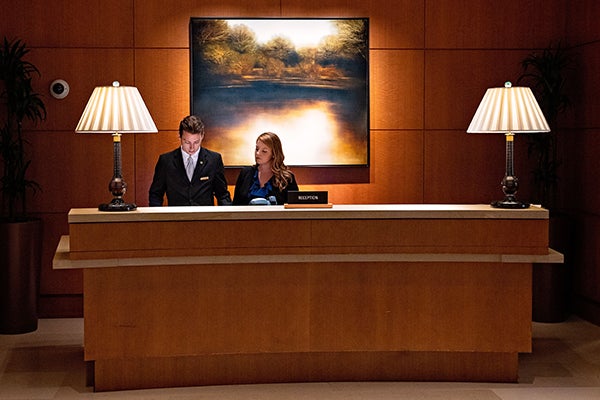Analysis shows hospitality/tourism industry will have a different look

The Umstead Hotel and Spa is a smaller resort destination that could be fare better than their larger counterparts in a post-pandemic norm. (Photo taken pre-COVID-19 by Cliff Hollis)
The Rosewood Hotel, located in Ontario, Canada, is most likely known to Schitt’s Creek fans as the Rosebud Motel. According to the School of Hospitality Leadership’s director, Dr. Bob O’Halloran, that type of property could see a resurgence as the hospitality and tourism industry emerges from a pandemic-driven hibernation.
In a recently published blog, “Yes, Virginia. Hospitality and tourism will survive,” O’Halloran analyzes recent research and articles that address COVID-19’s impact on hospitality and tourism. He finds opportunities for the industry to grow, but he suggests it could look different from the pre-COVID environment.
“For a long time, we’ve had established norms of what personal and business travel looks like,” said O’Halloran. “Due to COVID, those norms have been shattered, but opportunities do exist to create hybrid norms that could sustain moving forward.”
When looking at the research and published works, O’Halloran addressed opportunities that center on lower-level service hotels outperforming upper-class hotels, business travel’s shift to virtual meetings and increased domestic travel.
Bases on his findings, O’Halloran suggests there is room for optimism.
Bright spots
In the blog, O’Halloran addresses 12 areas where the hospitality and tourism industry sees an uptick in opportunities that reflects the pandemic-inspired changes travelers are now pursuing.
One area is the shift from larger resort and hotel destinations to smaller motels. Travelers are looking for properties that have fewer rooms, outside entrances and limited common space.
“Some resort properties are performing better than their larger competitors, and these properties are most likely in secondary resort destinations, which could be described as old beach or resort motels,” said O’Halloran.
“It’s no secret the travel and hospitality industry is in a crisis,” said Mike Harrington, a COB undergraduate and MBA graduate. Harrington is the owner and CEO of Carolina Retreats, which owns, operates and provides third-party management services for single-family vacation rental homes and intimate, limited-edition motels and inns throughout the coastal regions of North Carolina. His company has thrived since the 2008 recession — and then COVID-19 hit, which he says took “the legs out from under us once again.”
Today, his company’s efforts to respond to the pandemic are starting to pay off after being virtually shut down during the spring of 2020.
“We have bounced back with our best summer and fall occupancy in company history,” said Harrington. “We have a variety of thoughts on why, but the underlying reasons that keep coming up are families wanting to get away in a safe, self-contained environment while sticking closer to home.”
O’Halloran echoes Harrington’s thoughts on about sticking closer to home. “Do we remember staycations?”
The new normal
O’Halloran’s blog takes a deep dive into how the hospitality and tourism industry might rebound. He addresses how specific industries are thriving — golf rounds played in the U.S. are up by 50 million — and how virtual offerings will be a permanent part of meetings, conventions and special events.
“At the SHL, we’re preparing our students for the new norm. Online learning options and solutions will be in place for meetings, conferences and tradeshows, and perhaps a return to old-style renovated lodging structures, i.e., the beach/small resort motels,” said O’Halloran.
“The advancement of vacation management rental options and the continued entrance of lodging brands into this segment also will drive future options,” says O’Halloran. “On the food and beverage side, takeout, delivery and outside dining are options for all levels of service. In some cases, small quick-service operations are thriving via drive-thru pickup and closed dining rooms. Upper-level service restaurants also have, in many cases, adapted to takeout and delivery options.”